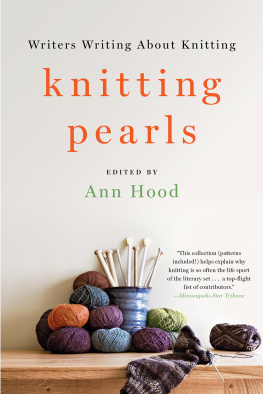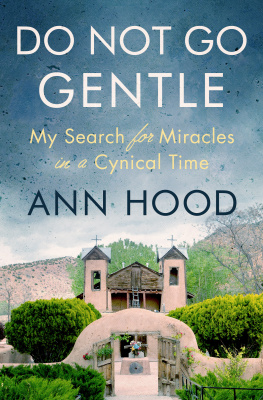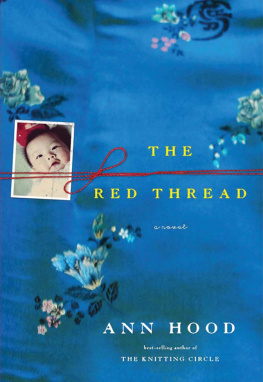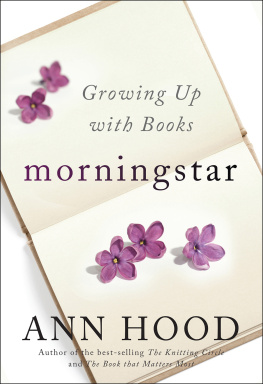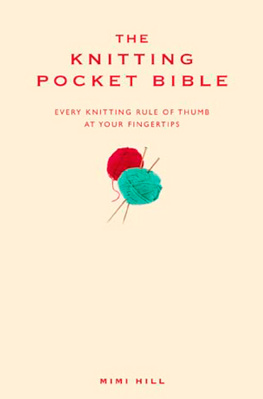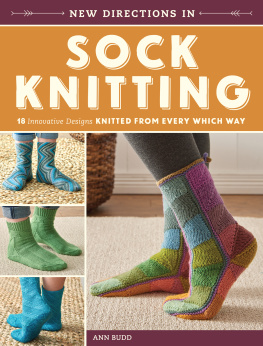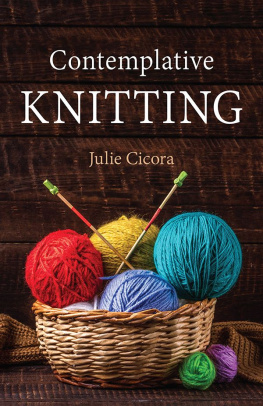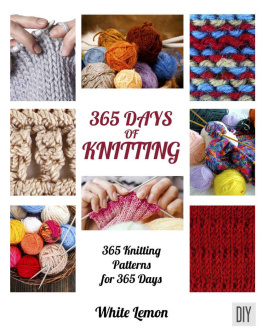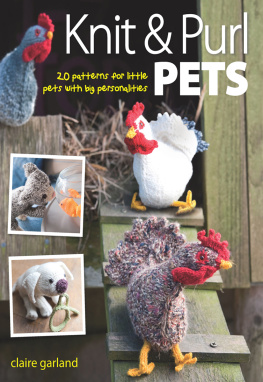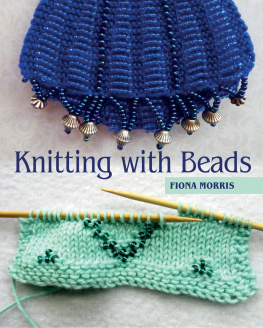
For the knitters who saved me
Jen,
Louise,
Stephanie,
Mary,
Laurie,
Nancy,
Pam,
Drake,
Karen,
and Helen

contents

I N TRUTH, IF MY ALMA MATER WEST WARWICK HIGH School gave out a prize for Least Likely to Knit, surely I would have won it. A straight-A student, I met my nemesis in Home Economics in 1970, when all the ninth graders had to take Sewing. Id successfully passed the Cooking section the fall before, which involved making no-bake cookies out of peanut butter, oats, and chocolate and serving them to the boys in the Woodshop room. Sewing proved more challenging. It involved cutting fabric, pinning patterns, taming a sewing machine, threading needles and bobbins. I sweated and cursed and prayed, but that wraparound skirt did not get made. Finally, I snuck it home to my cousin whod received an A the year before. She made the thing in no time, and I tried unsuccessfully to pass it off as my own work. The teacher knew better. She tore out all the stitches, and gave me my first B. I vowed to never pick up anything remotely crafty again.
Many years later, after the death of my five-year-old daughter Grace in 2002, I found myself in a yarn store not far from the Sakonnet River in Tiverton, Rhode Island, doing what I never imagined I would do: knitting. From the time I picked up those number 9 needles and a skein of sky blue yarn, I was hooked. I often say I knit my way through grief, and I do believe that is the best way to describe how I returned to a place of hope and joy in my life.
If you are one of the many people who read Knitting Yarns: Writers on Knitting, then you know the pleasure you have in store for you here. That first anthology, published in 2013, included twenty-seven of your favorite, award-winning, bestselling writers writing on my favorite topic: knitting. The idea came to me as I watched writers like me sitting in the back rows of classrooms and lecture halls knitting. I knew why I first picked up needles and yarn back in 2002; but why had they? And why does the magic of knitting elude some people? What followed were essays (and one poem) about the transformative power of knitting; knitted gifts; knitting envy; onetime knitting; anti-knitting; the history of knitting; and knitting lessons.
Fans of that book might be surprised that twenty-seven more of your favorite, award-winning, bestselling writers have written essays just as delightful and heartbreaking, joyous and funny, wise and poignant. If you havent read the first one, after reading Knitting Pearls, you surely will. Knitting Yarns gave us patterns by designer Helen Bingham, and one pattern by contributor Taylor Polites. This time, Im pleased to offer you wonderful patterns by some of the best knitting stores across the country. Purl Soho in New York City, Loop in Philadelphia, Churchmouse Yarns & Teas on Bainbridge Island in Washington, Hill Country Weavers in Austin, Texas, The Yarnery in Saint Paul, Minnesota, and Knit Purl in Portland, Oregon, have contributed patterns that will make you swoon.
And speaking of swooning, heres what you have to look forward to when you read Knitting Pearls. Like me, some of the contributors knit their way through adversity. Caroline Leavitts first husband asked her to make him a sweater with brontosauruses on it, but as she knit the marriage began to crumble. Lily Kings daughter knit a hat during their year living in Italy, which eased her homesickness. Cynthia Chinelly knits to help her escape the worry she has for her son. Melissa Coleman hoped that knitting a sweater for everyone in her family would remove the curse of divorce. An on-again, off-again knitter, Robin Romm returned to it when her mother was dying, and now knits as she waits for a baby. Back at Ithaca College in the 1970s, Bill Roorbach joined the knitting club to get over his broken heartand to meet girls.
Knitted gifts are important to us too. In fact, it sounds like the Christmas stockings Laura Lippmans mother knits are the same pattern as the ones from Lee Woodruffs childhood. Lippman writes about the thirty-first stocking her mother knit and why it will never be hung up. Woodruff examines the life of a marriage and adulthood. The surprise arrival of a cardigan helps Jared Flood understand the importance of homemade items, while the sweater Michael Colliers mother knit for him one Christmas helped him realize something about himself. And Nick Flynn, whose grandfather was a wool merchant, recalls the sweater his mother knit for him. Debra Gwartneys family believed you kept your troubles to yourself. But writing about the red vest her grandmother knit for her, Gwartney wonders about this advice. After her mother dies, Perri Klass poignantly reclaims all the items shed knit for her over the years. And Stewart ONan reminds us how knitting for a serviceman overseas might be the greatest gift of all.
The people who knit for us are heralded here. Cathi Hanaeurs mother-in-law knit her a heather blue sweater and shared her life with Hanaeur. When Samantha van Leer knit a scarf for her mother, she discovered what her Ema got from knitting her so many sweaters. Steve Almond spent the summer he was six with his grandmother, who taught him to crochet.
Yarn whisperer Clara Parkes writes a letter to all of her unfinished knitting projects. Jane Hamilton tells us why after a summer living in the Outer Hebrides in Scotland she vowed never to knit again. Ann Leary confesses how one special knitter turned her against all knitters who followed. Stephanie Mannatt Danler calls herself an unraveler, and writes about how she let go of the idea of knitting for good. Knitting through her chemotherapy and radiation would have helped, Christina Baker Kline admits. In her essay she tells us why she didnt. After Dani Shapiro put down her yarn and needles for good, she understood a new lesson about life. And with a grandmother who was an expert knitter, Jodi Picoult writes about why she never learned herself.
I believe that knitting is not just knitting. Anne Bartlett gives us twelve lessons proving that. Maile Meloy discusses knitting as negative and positive probability, and writes about how different knitting and writing are. Diana Gabaldon tells us how quitting the 4-H Club led to the knitting success that comes from the Starz television series of her Outlander novels.
What you have here, dear readers and knitters, is a stellar lineup of knitting stores and knitting essays. Kick off your shoes, curl up in your favorite chair, and dive into Knitting Pearls.
knitting pearls
MATERIALS
Hat with pompom: 1 (2, 2) skeins of Purl Sohos Worsted Twist or Worsted Twist Heather, 100% merino. We used all of our new colors! Look below for a list of colors.
Hat without pompom: 1 (1, 1) skeins of Purl Sohos Worsted Twist or Worsted Twist Heather, 100% merino.
A US #5, 16-inch circular needle
A US #7, 16-inch circular needle
A set of US #7 double pointed needles
4 stitch markers (one a different color from the others)
Optional: A US #6 or #7 straight needle for the Long Tail Tubular Cast On
Optional: Clover Pom Pom Maker in Large
Baby Size, left, from top to bottom: Paprika Red, Pink Grapefruit, Ochre Yellow, and Yellow Zest
Kid Size, center, from top to bottom: Lichen Green, Green Turquoise, Pistachio Green, and Cardamom Green
Next page
